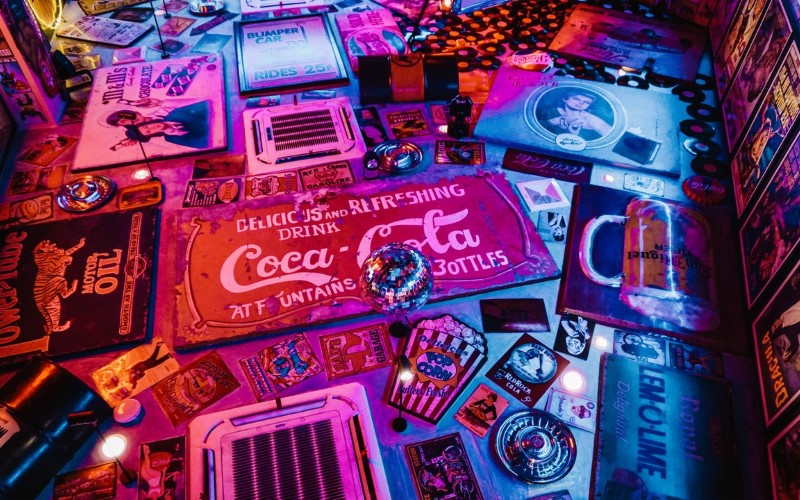
Are these two disciplines as different as they seem? Or does one complement the other?
At first glance, there seems to be little in common between an artist who paints on canvas for a living, and the person who creates the “coming next” animations we see on our television screens each day. Wind the clock back a little, however, and things quickly become much less neatly defined.
Graphic design is a relatively new discipline that has only become its own branch of study over the past two to three decades or so at the most. Before this, artists would be hired for the same types of marketing and advertising jobs that graphic design professionals are today.
Considered in that light, it seems that there must be some commonality between the two fields; an understanding of visual aesthetics and visible communication shared by both artists and graphic designers alike.
Browsing the pages of Eden fine art gallery, I wondered how alien the concept of laying out the pages of the website would feel to the artists who populate its pages, and vice-versa; I couldn’t imagine how those filling either role could stand-in for the other.
Looking at the issue from the artist’s perspective next, it would perhaps be fair to state that fine art is considered as being an “emotional counterpart” to the more technically focused field of graphic design.
Whereas graphic design roles can be found in almost every industry serving both commercial and practical purposes, the job title of “artist” is hugely more limited in terms of both scope and accessibility.
The Modern-Day Reality of Being an Artist
Marketing departments don’t need painters to create their flyers – they need somebody who can use Adobe Creative Suite quickly and proficiently. Artists might be hired for some tasks where illustrations are required, but stock photography, clip art, and sketches are now all highly developed.
If an artist cannot establish themselves as a creator of “fine art”, they will often find themselves forced to do something other than what they love – or resort to producing material for these stock image websites, which have become the go-to resource for everybody from newspapers to bloggers, marketing departments to web development studios.
Some might say it’s best this way – let the finest bubble their way to the top, whilst the rest languish in the endless indexes of mediocrity.
However, all creative professionals have to start somewhere; the loss of so many live music venues in almost every Western country over the past fifty years has undoubtedly caused a massive drop in creativity in the music world.
We should be encouraging artists to strive to make a name for themselves by producing fine art, even if producing stock photography ends up being their day job. And that isn’t such a terrible fate – just one great picture being picked up by a top newspaper or premium magazine can bring in a decent quarter’s earnings at a stroke.
Back on Point: Can Design not also be Art? And Vice-Versa?
Designers and artists seem to have become pitted against each other in recent years, with the boldest designers being steadfast in their belief that their own discipline most definitely is NOT art; it serves a functional purpose.
Artists will also press home their own beliefs that their craft is intended to provoke thought and emotions, not solve problems. Art doesn’t belong on a title card, they might tell you.
I was amazed at the strength of emotions on this issue whilst performing research for this article. A London-based artist seemed quite bemused to get my call and was intrigued when I told him I was an independent artist of a different nature, writing an article on the subject of Fine Art vs Graphic Design.
He told me that he had worked as an artist in his early years, before becoming a graphic designer in the late 1990s before retiring to return to his love of art in the last five years.
I was immediately hooked, and quickly lost track of time as he spoke of his time surrounded by designers who saw their job as being purely methodical, a data-driven exercise in function over form, completely isolating themselves from the possibility of adding a little artistic flair to their work.
Creating fine art, he explained “[…] is seen as being inherently instinctive, which is automatically an unforgivable sin in a world where every pixel is counted, every color is selected using wheels and charts, and dimensions are determined by ratios and technical limitations. The human eye isn’t meant to determine these things, to many Graphic Designers”.
Summing Up
It was obvious that my artist friend had a great deal of respect for both Artists and Graphic Designers, but that he had felt limited in his ability to express himself creatively when being employed as a graphic designer. He yearned for the freedom that his art brought him in his younger years, and was determined to find it again even if it meant a drop in salary.
Amazingly though, he also told me that this would never have been possible were it not for the development of technology – essential to which is the discipline of graphic design. Sites such as Etsy, eBay, and Fiverr now enable him to sell enough pieces each month to provide for him and his family despite being relatively unknown as an artist.
